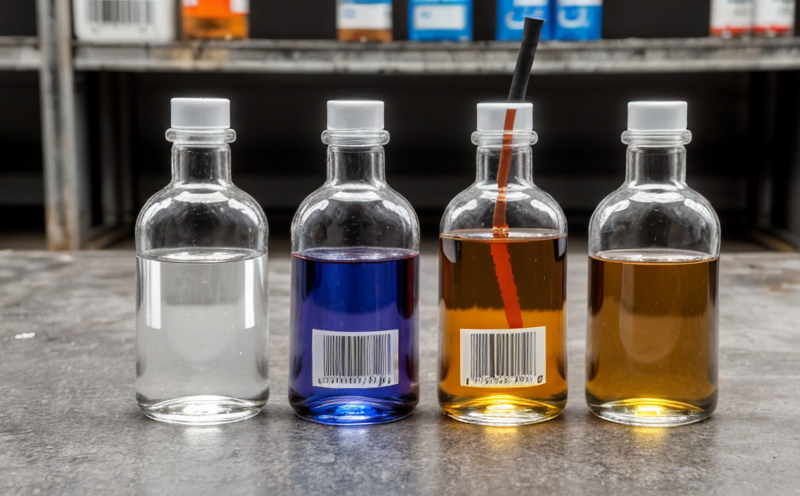ISO 9227 Salt Spray Corrosion Stability Testing
The ISO 9227 salt spray corrosion stability test is a standardized method used to evaluate the resistance of materials and coatings to atmospheric corrosion. This procedure simulates the effects of corrosive environments such as coastal areas, industrial atmospheres, or humid climates by subjecting specimens to controlled exposure to salt mist.
This test is particularly important for industries where product durability in harsh environments is critical, including automotive, aerospace, marine, and construction sectors. The test helps manufacturers identify materials and coatings that can withstand corrosion without degradation over time. By following ISO 9227 standards, companies ensure the reliability of their products in various environmental conditions.
The testing process typically involves placing specimens into a chamber where they are exposed to a salt mist atmosphere for extended periods. The duration of exposure can vary based on the specific application and material being tested, but it is generally between 48 hours and several weeks. During this time, the performance of the specimen is closely monitored to assess any signs of corrosion.
The primary goal of ISO 9227 testing is to provide a consistent method for evaluating materials' resistance to corrosive environments. This ensures that manufacturers can compare results from different labs or batches of materials with confidence. By adhering to international standards, companies maintain high-quality control and compliance with regulatory requirements.
The test setup includes specific apparatus designed to replicate real-world conditions accurately. The chamber is maintained at a certain temperature (typically 35°C) and relative humidity levels that simulate coastal climates effectively. Salt solutions are carefully formulated according to the ISO specifications to ensure uniformity across tests.
Once testing is complete, specimens are visually inspected for signs of corrosion such as rust formation or loss in mass. The extent of any observed degradation provides valuable insights into the material's durability and suitability for specific applications.
Understanding the principles behind this test method allows quality managers and R&D engineers to make informed decisions about material selection and coating treatments, ensuring product longevity even under challenging environmental conditions.
Applied Standards
| Standard Number | Description | Relevant Sections |
|---|---|---|
| ISO 9227:1996 | Corrosion of metals - Salt spray (salt fog) tests | Paragraphs describing the test method, apparatus requirements, and specimen preparation. |
| ASTM B117-03(2018) | Automatic Salt Spray (Fog) Testing | Equivalent American standard that aligns closely with ISO 9227. |
The ISO 9227 salt spray test is widely recognized as the international standard for evaluating corrosion resistance. It uses a combination of controlled environmental conditions and standardized procedures to ensure consistent results across different laboratories worldwide. This standard ensures that all tests conducted meet high-quality standards, providing reliable data for decision-making processes.
Benefits
The ISO 9227 salt spray corrosion stability test offers numerous benefits, including:
- Improved Product Quality: By identifying materials and coatings that perform well under corrosive conditions early in the development process, companies can enhance product quality.
- Cost Savings: Early detection of potential issues through rigorous testing helps avoid costly rework or recalls later in production cycles.
- Regulatory Compliance: Adhering to international standards ensures that products meet regulatory requirements and gain market acceptance more easily.
- Informed Decision Making: Detailed test results provide valuable information for R&D teams, enabling them to make informed choices regarding material selection and coating treatments.
- Predictive Testing: The ability to simulate real-world conditions allows manufacturers to predict how their products will perform over extended periods.
In summary, ISO 9227 salt spray testing plays a crucial role in ensuring product reliability and compliance while offering significant cost savings and improved decision-making capabilities for businesses operating in various sectors.
Use Cases and Application Examples
The ISO 9227 salt spray test finds application across multiple industries where products face exposure to corrosive environments. Some key use cases include:
- Aerospace Industry: Ensuring that aircraft components, such as fasteners and structural parts, maintain their integrity during long flights in salty coastal regions.
- Automotive Sector: Evaluating the durability of car body panels, exhaust systems, and other external metal components exposed to road salt and humidity.
- Marine Industry: Assessing the corrosion resistance of ship hulls, mooring equipment, and marine hardware used in harsh maritime environments.
- Construction Sector: Determining the longevity of building materials like steel reinforcing bars, concrete reinforcement, and exterior cladding exposed to salt-laden air and water during construction projects near coastal areas.
The results from ISO 9227 tests play a vital role in these industries by helping manufacturers choose appropriate materials and coatings that can withstand the rigors of their operating environments. This ensures not only product reliability but also extends the lifespan of assets, reducing maintenance costs significantly.





